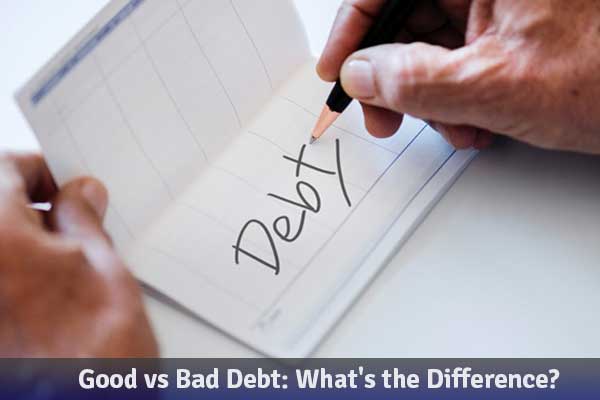In today’s world, it seems like pretty much everyone is carrying around some debt. In fact, the average American has about $90,000 worth of debt. That number is even higher for Millennials who are dealing with things like student loan debt.
As scary as the word debt sounds, not all forms of debt are necessarily bad. Read on to learn about good vs bad debt and how you manage your debt effectively.
Page of Contents
What Are Good Types of Debt?
You’re probably asking yourself, “is debt good?”
In many instances, it actually can be! Good debt typically includes things like student loans, mortgages, and business loans. In short, good debt is anything that can be used to boost your current or future net worth.
Let’s say you purchase a home with a 40-year mortgage. There are many 40 year mortgage benefits, but one of the biggest benefits is that it helps diversify your forms of debt. On top of that, mortgages are a form of debt that is backed by something tangible, your home, so creditors know that you have at least one major asset to your name.
The same is true for student loans because they increase your ability to earn money in the future.
What Are Bad Types of Debt?
Bad types of debt are forms of debt that don’t have any positive impact on your future net worth. The biggest contributor to bad types of debt is credit cards. As soon as you use your credit card to purchase something like a couch or this week’s groceries, those items lose value.
You might be surprised to learn that auto loans are also a form of bad debt. That’s because your car loses at least 20 percent of its value as soon as you drive them off the lot. Over time, this will balance out and you’ll have equity in your car, but for the first few years of your loan, it is considered bad debt.
Tips for Eliminating Debt
You know all about good debt vs bad debt, but what can you do to help eliminate your bad debt?
The best thing you can do is to pay more than the minimum amount on your credit card bills each month. Once you pay off one card, use the amount of money you were paying on that card to help speed up paying off your other credit cards. Don’t spend money on your cards, and over time, you’ll find yourself in great shape!
Are You Fixing Your Ratio of Good vs Bad Debt?
For most people, debt is a part of life. Learning the difference between good vs bad debt is the first step toward taking control of your financial future. Remember, taking on a little bit of debt can be helpful for your credit score and your ability to purchase a home, but be careful to not let it get carried away.
Do you want to learn more effective ways to make sure that your financial future is on the right track? We can help you out with that. Spend some time looking through our blog for tons of great information and financial strategies and much more.
